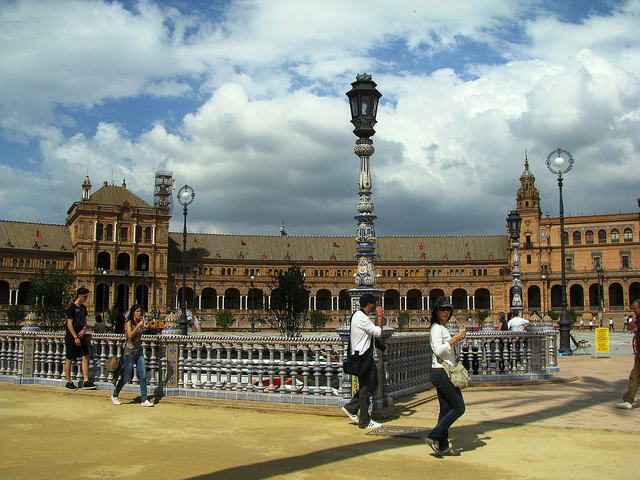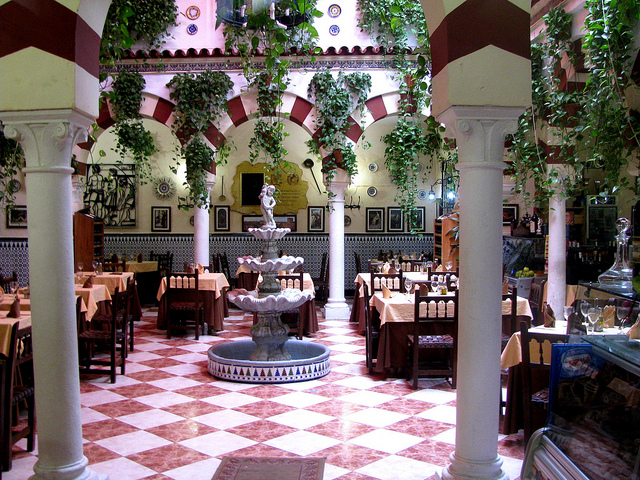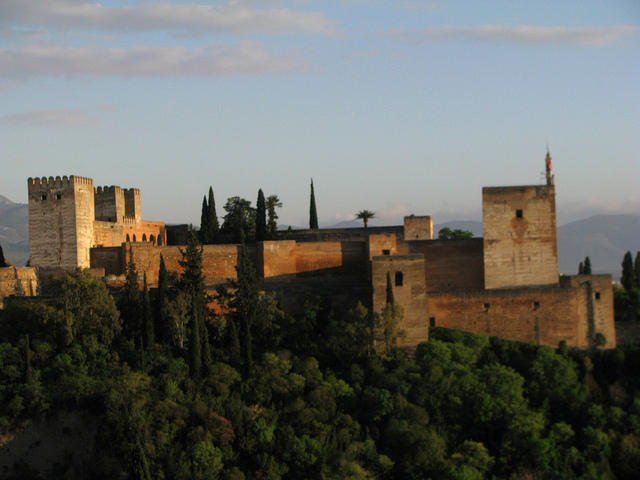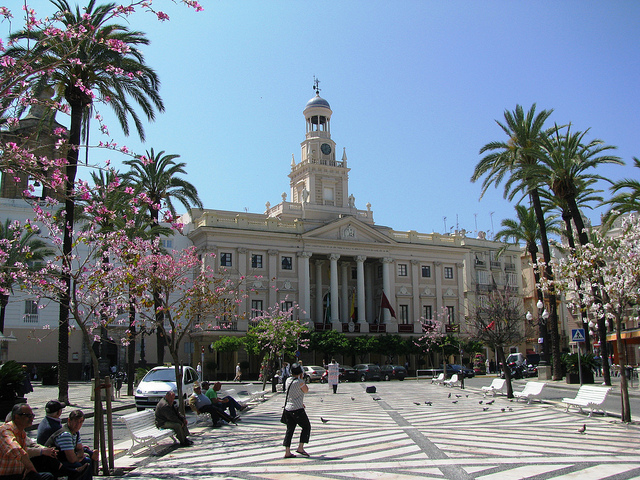My goal was to visit some of the most well-known sites of Seville, including the Giralda. But the layout of downtown Seville with its narrow and confusing street patterns had me ask the locals about five times before I found Seville’s most well-known landmark. The Giralda is the belltower of the Cathedral of Seville, a former minaret whose construction was started in 1184. After the reconquest of Seville from the Moors in 1248, the city’s mosque was turned into a church, and Gothic and Baroque elements were added to the tower. During the Renaissance it was expanded. The Giralda has become the inspiration for many other towers across the world, including the Ferry Building in San Francisco and the Biltmore Hotel in Miami.

There was a huge lineup in front of the cathedral, so I decided to explore the winding streets of the Barrio de Santa Cruz – Seville’s former Jewish quarter. The narrow streets hold cozy restaurants, bistros and souvenir shops. From the Barrio de Santa Cruz I then walked to the Plaza de España, the site of the Spanish pavilion that was built for the 1929 Ibero-American World Fair. Located inside Maria Luisa Park, this large complex is a mix of Renaissance Revival, Art Deco and Neo-Mudejar styles. In front of a huge half-circle of buildings is a large moat with attractive bridges. Today the Plaza de España houses a variety of government offices while it is also hugely popular with the tourists.

Towards the late afternoon I hopped on one of the double-decker sightseeing buses to get to know the city better. We started with the Triana neighbourhood across the river, a traditional working class area that is famous for its bull fighters and flamenco. We continued our way through the grounds of Expo 1992 which attracted almost 42 million visitors and put Seville on the map.

Back on the east side of the Guadalquivir River we also drove by the Maestranza, the oldest bullring of Spain whose construction started in 1749. Just a few hundred meters further south was passed by the Torre de Oro, a twelve-sided military watchtower that was built in the early 1200s as a defensive lookout.

As it started to rain I drove back to spend a cozy night in Carmona and rest up for my second day of explorations in Seville. The next morning, Good Friday, I actually managed to find parking next to the Guadalquivir River and had breakfast inside the former Seville Railway Station which has been turned into a shopping centre with several restaurants and cafes. The streets were eerily quiet and the sky was darkening. Rain was definitely in the forecast for April 21, 2011. Unfortunately this meant that the Semana Santa processions would be cancelled for today.




